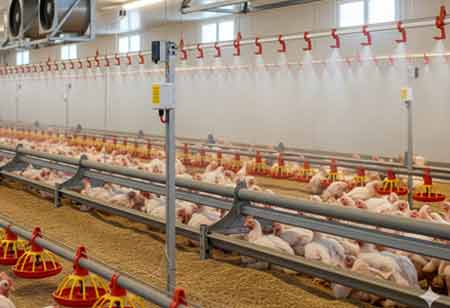Thank you for Subscribing to Agri Business Review Weekly Brief
Essentials of Grain Handling and Storage Facilities
Grain handling and storage facilities are indispensable for preserving agricultural produce's quality, quantity, and economic value.

By
Agri Business Review | Tuesday, December 24, 2024
Stay ahead of the industry with exclusive feature stories on the top companies, expert insights and the latest news delivered straight to your inbox. Subscribe today.
Grain handling and storage facilities are indispensable for preserving agricultural produce's quality, quantity, and economic value.
Fremont, CA: Grain handling and storage facilities are vital components of the agricultural value chain, ensuring the effective post-harvest management of grains. The facilities play a critical role in preserving the quality and quantity of grains, reducing post-harvest losses, and facilitating the smooth flow of agricultural produce from farms to markets or processing units. With global food demand rising, the importance of efficient grain storage and handling infrastructure has grown as they help safeguard food security, stabilize market prices, and support farmers' livelihoods.
Without proper storage, grains are highly susceptible to spoilage caused by pests, mold, and environmental factors such as moisture and temperature fluctuations. Modern storage solutions, such as silos and warehouses equipped with climate control systems, are designed to mitigate these risks, ensuring grains remain fit for consumption or industrial use. It is essential in regions where climatic conditions can accelerate spoilage, leading to significant economic and food security challenges.
Effective grain handling systems are equally essential, as they facilitate the efficient movement of grains from farms to storage facilities and, eventually, to consumers or industrial users. Drying grains to the appropriate moisture levels prevents spoilage and fungal growth during storage. Sorting and grading improve marketability by meeting quality standards demanded by consumers and industries.
Grain storage and handling facilities also play a pivotal role in reducing post-harvest losses, which account for a significant percentage of agricultural output in many developing countries. By providing secure storage solutions and proper handling infrastructure, these facilities minimize the wastage of grains, allowing farmers to maximize their yields and income. The capacity to regulate supply and demand enhances market stability and benefits producers and consumers.
From a macroeconomic perspective, grain storage and handling facilities contribute to food security and economic resilience. They support export activities by maintaining grain quality during transit, enabling countries to compete in international markets. The availability of robust infrastructure reduces dependency on food imports and strengthens a nation's self-sufficiency.
Grain storage and handling facilities must incorporate several essential features. Accessibility to the facilities is crucial, particularly in rural areas where farmers often lack the means to transport their produce over long distances. Modernizing the facilities with advanced technology and expanding their reach to underserved areas can further enhance their impact, fostering a more resilient and efficient agricultural system.





